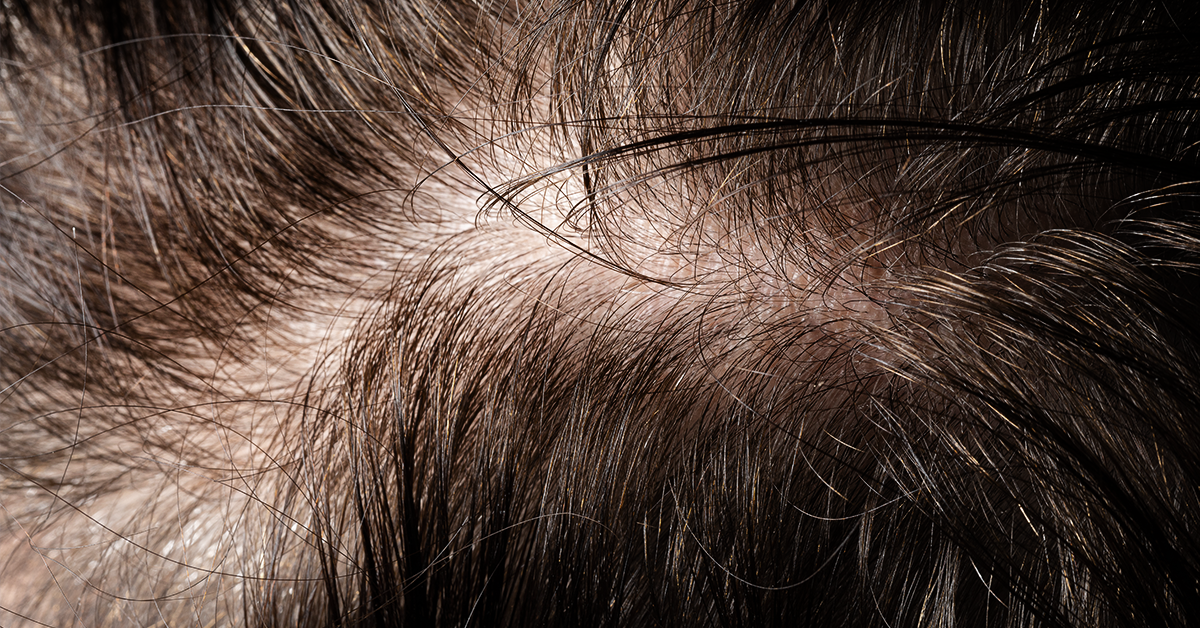Traction alopecia is a condition of hair loss caused by excessive tension on the scalp, resulting in gradual hair thinning over time. It typically affects those with tight hairstyles or certain extensions and can lead to permanent damage if left untreated.
This article will discuss in detail the symptoms, causes, and treatment options for traction alopecia. With these strategies, you can protect your hair and maintain a healthy scalp. Let’s get started.
An overview of traction alopecia
Traction alopecia is a kind of hair loss caused by excessive and prolonged strain on the hair follicles. It is most commonly seen in individuals who frequently tie their hair in tight hairstyles, such as ponytails or braids, or wear extensions. The tension placed on the scalp from these types of hairstyles can lead to scalp inflammation and weaken the roots of existing hairs, leading to gradual thinning over time.
Traction alopecia symptoms
Here are six symptoms of traction alopecia:
Hair loss:
Traction alopecia is characterised by hair loss in areas where the hair has been pulled tightly, such as the hairline, temples, and crown of the head.
Scalp irritation:
Traction alopecia can cause irritation and inflammation of the scalp, which may be accompanied by itching or tenderness.
Thinning hair:
Hair can become thinner and weaker over time due to traction alopecia, not just hair loss.
Receding hairline:
Traction alopecia can cause the hairline to recede, particularly in individuals who wear tight hairstyles for extended periods.
Multiple hairs in one follicle:
Traction alopecia can cause multiple hairs to grow from a single follicle, further weakening the hair and leading to more hair loss.
Bald spots:
In severe cases of traction alopecia, bald spots may develop on the scalp, indicating significant hair loss.
Causes of traction alopecia
Here are five common causes of traction alopecia:
Tight hairstyles:
Traction alopecia is often caused by wearing hairstyles that pull on the hair follicles, such as tight braids, weaves, or ponytails. This constant tension can damage the hair follicles and lead to hair loss over time.
Hair accessories:
Wearing hair accessories such as headbands, clips, or hairpins that are too tight can also cause traction alopecia. These accessories can pull on the hair and damage the hair follicles.
Chemical treatments:
Chemical treatments such as relaxers, perms, or hair dyes can weaken the hair and make it more susceptible to damage from tight hairstyles or hair accessories.
Genetics:
Some individuals may be more prone to developing traction alopecia due to their genetics. They may have weaker hair follicles or a predisposition to hair loss.
Medical conditions:
Certain conditions, such as autoimmune disorders or scalp infections, can also cause traction alopecia. These conditions can weaken the hair follicles and make them more susceptible to damage from tight hairstyles or hair accessories.
Treatments for traction alopecia
Here are four treatment options for traction alopecia:
Changing hairstyles:
The first step in treating traction alopecia is to stop wearing tight hairstyles or hair accessories that may be causing hair loss. This may involve changing to looser hairstyles or avoiding hair accessories that pull on the hair.
Using hair growth products:
Many hair growth products are available that may help stimulate hair regrowth in areas affected by traction alopecia. This may include hair growth shampoos, conditioners, and serums that contain ingredients such as keratin, biotin, or castor oil. Hair growth supplements that contain vitamins and minerals such as biotin, vitamin C, and iron may also help promote hair growth.
Medical treatments:
In more severe cases of traction alopecia, medical treatments such as corticosteroid injections or hair transplantation may be recommended. Corticosteroid injections can help reduce inflammation and stimulate hair regrowth, while hair transplantation and transplanting them to the affected area.
Practising good hair care:
Practising good hair care habits can help prevent further damage to the hair and promote healthy regrowth. This may include avoiding tight hairstyles, using gentle hair care products, and avoiding chemical treatments that can damage the hair.
Conclusion
Traction alopecia is a condition that affects many people, typically those with longer or more textured hair. While it can be distressing to experience, there are ways of treating and managing traction alopecia, such as avoiding tight styles and using gentler styling techniques. Additionally, topical medications and laser therapy may help reduce symptoms and regrow hair.
FAQs
Q1. How rare is traction alopecia?
A1. Traction alopecia is common, especially among people who use tight hairstyles or persistently pull hair too tightly over long periods.
Q2.Can hair regrow from traction alopecia?
A2. Yes, hair can regrow from traction alopecia with proper hair loss treatment. If caught early enough, the condition is reversible, and the lost hair can be replaced with healthy new growth.
Q3. How long does it take for traction alopecia to go away?
A3. The amount of time it takes for traction alopecia to go away depends on the severity of the condition and how quickly treatment is sought. Depending on how early treatment is started, it could take weeks or months for symptoms to improve.
Q4. What is the first stage of traction alopecia?
A4. The first stage of traction alopecia is known as the reversible stage, and at this point, the hair follicles are still intact. During this stage, some individuals will experience thinning hair or bald patches in areas where they pull their hair too tightly.
This article is for informational purposes only and does not constitute medical advice. The information contained herein is not a substitute for and should never be relied upon for professional medical advice. Book a consultation with andSons medical team to learn more about healthcare treatments here.


